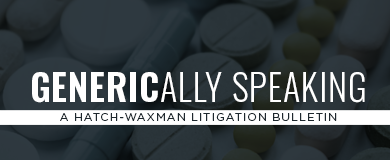- Acumen Powered by Robins Kaplan LLP®
- Affirmative Recovery
- American Indian Law and Policy
- Antitrust and Trade Regulation
- Appellate Advocacy and Guidance
- Business Litigation
- Civil Rights and Police Misconduct
- Class Action Litigation
- Commercial/Project Finance and Real Estate
- Corporate Governance and Special Situations
- Corporate Restructuring and Bankruptcy
- Domestic and International Arbitration
- Entertainment and Media Litigation
- Health Care Litigation
- Insurance and Catastrophic Loss
- Intellectual Property and Technology Litigation
- Mass Tort Attorneys
- Medical Malpractice Attorneys
- Personal Injury Attorneys
- Telecommunications Litigation and Arbitration
- Wealth Planning, Administration, and Fiduciary Disputes
Acumen Powered by Robins Kaplan LLP®
Ediscovery, Applied Science and Economics, and Litigation Support Solutions
-
April 23, 2024David Martinez Recognized Among Top 100 Lawyers in Los Angeles by LA Business Journal
-
April 15, 2024Robins Kaplan Named to 2024 BTI Client Service A-Team
-
April 9, 2024Robins Kaplan LLP Files Complaint Against Social Media Giants Meta, Snap, TikTok on Behalf of Spirit Lake Nation, Menominee Indian Tribe of Wisconsin
-
April 30, 2024Navigating Generational Dynamics
-
May 2-3, 2024ACI Advanced Forum on Managed Care Disputes and Litigation
-
May 6, 2024Litigating with the Legends
-
First QuarterGENERICally Speaking: A Hatch-Waxman Litigation Bulletin
-
March 2024e-Commerce: Pitfalls and Protections
-
March 25, 2024Endo Ventures Unlimited Co. v. Nexus Pharms. Inc.
-
September 16, 2022Uber Company Systems Compromised by Widespread Cyber Hack
-
September 15, 2022US Averts Rail Workers Strike With Last-Minute Tentative Deal
-
September 14, 2022Hotter-Than-Expected August Inflation Prompts Massive Wall Street Selloff
Find additional firm contact information for press inquiries.
Find resources to help navigate legal and business complexities.
Tolmar Therapeutics, Inc. v. Foresee Pharms. Co., Ltd.
Eligard® (leuprolide)
October 24, 2022

Case Name: Tolmar Therapeutics, Inc. v. Foresee Pharms. Co., Ltd., Civ. No. 21-15782 (EP) (CLW), 2022 WL 13858026 (D.N.J. Oct. 24, 2022) (Padin, J.)
Drug Product and Patent(s)-in-Suit: Eligard® (leuprolide); U.S. Patent No. 8,470,359 (“the ’359 patent”)
Nature of the Case and Issue(s) Presented: Tolmar own multiple NDAs for Eligard, an injectable leuprolide acetate drug product that treats advanced prostate cancer. It also owns the ’359 patent, which is listed in the FDA’s “Orange Book” as covering Eligard. Foresee submitted its NDA for Camcevi®, another leuprolide injectable product for treating advanced prostate cancer, which the FDA approved in May 2021. In January 2022, co-defendant Accord became the designated Applicant Holder for the Camcevi NDA.
Tolmar filed suit on in August 2021, alleging that Foresee’s NDA filing infringed the ’359 patent. Foresee previously moved for judgment on the pleadings. In April 2022, the court granted Plaintiffs leave to file an amended complaint and terminated that motion. Tolmar filed its amended pleading, adding Accord as a defendant, but otherwise asserting essentially the same infringement claim. Foresee re-filed its motion, now joined by Accord. The court denied the motion on the basis that it could not analyze patent infringement without determining the asserted claim’s boundaries via the claim construction process.
Why Tolmar Prevailed: Defendants argued that they do not infringe because: (i) there can be no literal infringement when the claim requires “about 4 to about 8” carbon atoms and Camcevi consists of 12 carbon atoms; and (ii) Tolmar cannot rely on the doctrine of equivalents because the use of “about” as a claim-broadening tool limits the applicability of the doctrine of equivalents and because the disclosure-dedication rule also precludes the doctrine of equivalents.
Plaintiffs counter that either theory of infringement—literal infringement or infringement under the doctrine of equivalents—requires construction of the ’359 patent’s “about 4 to about 8” carbons to determine how far “about” extends the patent claim.
“Recall Defendants’ argument: that Plaintiffs cannot, as a matter of law, rely on the doctrine of equivalents to prove that the ’359 patent’s ‘about 4 to about 8’ carbon structure is infringed upon by Camcevi’s 12-carbon structure. In other words, Plaintiffs cannot, according to Defendants, claim a broad, ‘fuzzy’ range (by definition, expanding the claim), then expand it yet further by accusing Camcevi of infringement using the doctrine of equivalents. Defendants correctly summarize the doctrine of equivalents, but applying it, like the theory of literal infringement, also requires claim construction.”
After a review of the relevant case law, the court made two findings: (i) the use of broadening language does not automatically preclude reliance upon the doctrine of equivalents; and (ii) in each of the cases reviewed by the court, the asserted claims had been construed prior to an infringement determination. Moreover, when claims of infringement are determined at the pleading stage, the issues are more factually straightforward or purely legal. “The claim here is not so straightforward.”
Related Publications
Related News
If you are interested in having us represent you, you should call us so we can determine whether the matter is one for which we are willing or able to accept professional responsibility. We will not make this determination by e-mail communication. The telephone numbers and addresses for our offices are listed on this page. We reserve the right to decline any representation. We may be required to decline representation if it would create a conflict of interest with our other clients.
By accepting these terms, you are confirming that you have read and understood this important notice.
